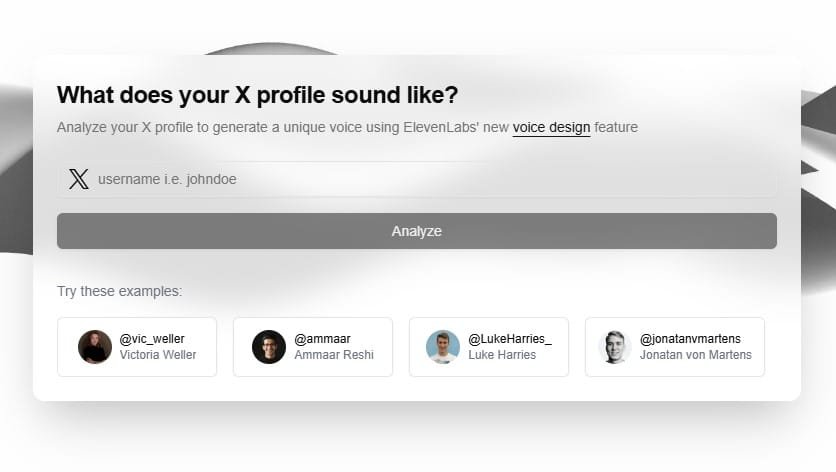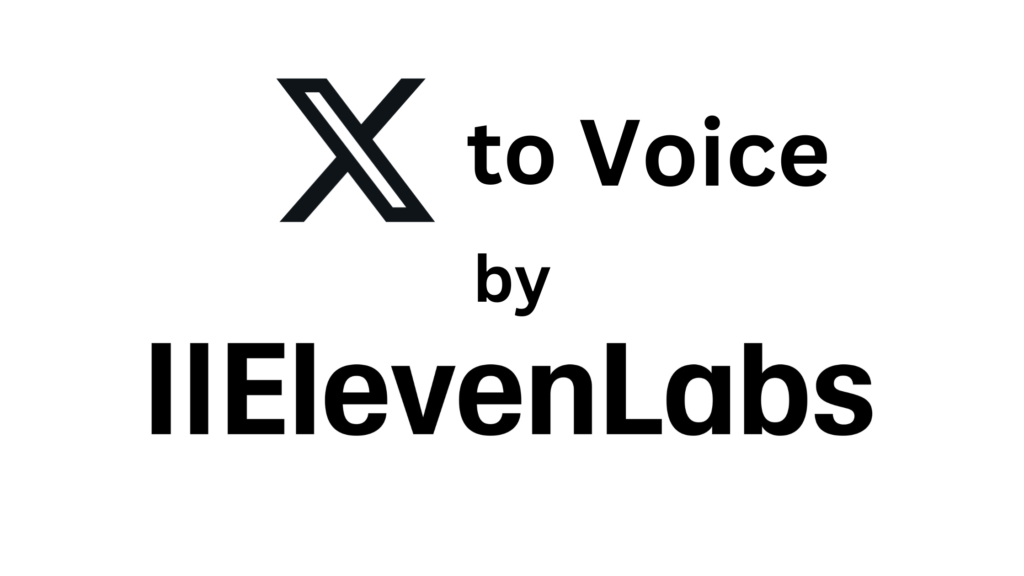So, here’s a weird but cool thing I stumbled upon. Ever wonder what your online profile might actually sound like? Well, with X to Voice by Eleven Labs, you can get a digital avatar that speaks for you. Yeah, your social media profile with a voice. It’s a new way for creators (and just curious people) to experiment with voice AI, but it’s also a little… let’s say, unexpected in how it works.
Let me walk you through what happened when I, Chamber Rekt, decided to try it out.
What Happens When I Give My Profile a Voice
So, I’m already using Eleven Labs quite a bit for projects, mostly for their speech-to-speech features. They’re amazing for adding a little nuance to AI voices, which is great for content creation. But this was my first time testing out X to Voice – and I was really curious to see if it could nail my profile’s voice.

The idea seemed straightforward. I typed in my name, hit enter, and waited for it to generate my avatar’s voice. It was supposed to sound like me, right? Well… when it finally loaded, I heard a voice, alright – only it wasn’t exactly the voice I was expecting.
When AI Chooses Your “Voice” for You
Okay, so imagine hearing a recording of your voice and thinking, “Do I actually sound like that?” Now take that experience and multiply it by ten because what came out was a completely different person. Specifically, the AI assigned me the voice of a mid-30s Canadian woman with a “melodic tone and a playful, whimsical cadence.” And listen, I love all that, but it’s not exactly how I sound, nor was it what I had in mind for my digital avatar.
The kicker? There’s no option to adjust it. No way to change the tone, the pitch, or even the gender. I was stuck with this assigned voice, which was a little funny but also kind of frustrating. It’s like when you catch your voice on a recording and it doesn’t quite line up with what you hear in your head – except that this time, the voice was an entirely different person!
Amazing Potential, But Needs Some Fine-Tuning
Now, don’t get me wrong – this technology is super cool. X to Voice and Eleven Labs are definitely onto something here, and I think we’re only scratching the surface of what generative AI can do with voices. Imagine using this for animated characters, explainer videos, or even virtual reality interactions where people’s profiles talk to you. There’s real potential.

But… there are some limitations. Right now, the lack of customization is a bit of a problem. Sure, it’s fun to play around with, but if you want your digital avatar to actually sound like you, it’s just not quite there yet.
Here are the main things that stood out:
- You Can’t Customize the Voice: Right now, X to Voice doesn’t let you tweak the avatar’s voice to match your own preferences. So if it picks something off – like, say, a completely different gender – you’re stuck with it.
- It’s More Novelty Than Necessity (For Now): As a tool, X to Voice feels more like an experimental feature than something you’d use seriously in a video or for creating content. It’s cool, yes, but I’m not sure it’s going to replace my usual voiceover methods just yet.
How Does X to Voice Really Work?
Naturally, I wanted to see if this was just my experience or if other people’s voices lined up better. I checked out some other profiles, and some of them seemed to fit a little closer to the actual person. It’s almost like the system analyzes your face or profile picture and makes a guess on your voice. But that doesn’t mean it’s accurate. It’s a bit of a hit-or-miss.
In my case, it felt like a miss. And it made me wonder – are we starting to “catfish” ourselves with digital voices? I mean, are we presenting avatars online that look and sound like someone else entirely? Did Black Mirror do an episode about this? Maybe it’s just me, but there’s definitely something strange about hearing a version of yourself that you didn’t quite ask for.
Should You Try X to Voice?
If you’re into testing new AI tools, X to Voice by Eleven Labs is definitely something to play around with. It’s fun, and it gives you a peek at what might be possible in the future of social media and virtual personas. But if you’re hoping for a digital voice that matches you to a tee, this tool has a little ways to go.
Still, I’ll probably keep experimenting with it and other tools. In fact, I’m thinking of doing more short videos to share little AI experiments like this one. Maybe you’ll want to try it out, too, and see if it does a better job capturing your voice.
Let me know – do you think digital voices add something new, or are we getting a little too close to blurring the lines of who we are online?



